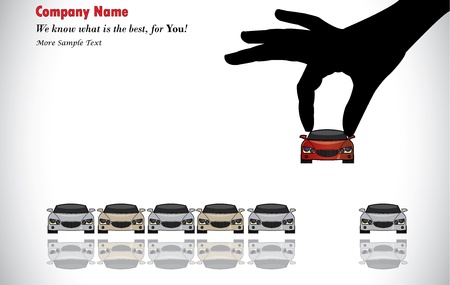Understanding IDV: The Backbone of Your Car Insurance
When you hit the road in India, whether youre weaving through the traffic jams of Mumbai or cruising along the peaceful highways of Kerala, one thing remains constant—the need for solid car insurance. At the very heart of your motor insurance policy lies a term called IDV, or Insured Declared Value. But what does IDV really mean, and why is it such a crucial part of car ownership in India? In simple terms, IDV represents the current market value of your vehicle as declared by you and acknowledged by your insurance provider. This value isn’t just another number; it’s the maximum amount you can claim if your car is stolen or suffers total loss due to an accident. So, understanding IDV isn’t just insurance jargon—it’s about protecting your investment on Indian roads, from Delhi’s busy intersections to the lush Western Ghats.
2. How is IDV Calculated in India?
If you’ve ever taken your car for a drive from the bustling lanes of Mumbai to the highways of Rajasthan, you know that Indian roads put vehicles through their paces. This is why calculating the Insured Declared Value (IDV) for your car insurance in India is not just about numbers—it’s about understanding how your car’s value adapts to both market forces and real-world driving conditions.
Breakdown of IDV Calculation
The IDV is essentially the current market value of your vehicle, which is the maximum sum insured fixed by the insurer and paid out in case of total loss or theft. Here’s a closer look at how insurers arrive at this crucial figure:
Key Factors Considered
- Car Make & Model: Premium brands like Maruti Suzuki, Hyundai, Tata, or Mahindra might have different depreciation trajectories compared to luxury brands like Mercedes-Benz or BMW.
- Manufacturing Year: The older the vehicle, the lower its IDV due to depreciation.
- Depreciation Rate: As per IRDAI guidelines, standard depreciation rates are applied based on the age of the vehicle.
- Indian Driving Conditions: Regular wear and tear from potholes, monsoon floods, and daily city traffic can subtly impact your car’s value, often reflected in slightly conservative IDV estimations by insurers.
IDV Depreciation Table as per IRDAI Guidelines
| Age of Vehicle | Depreciation (%) | IDV Calculation Formula |
|---|---|---|
| Up to 6 months | 5% | IDV = Ex-showroom Price – 5% Depreciation |
| 6 months – 1 year | 15% | IDV = Ex-showroom Price – 15% Depreciation |
| 1 – 2 years | 20% | IDV = Ex-showroom Price – 20% Depreciation |
| 2 – 3 years | 30% | IDV = Ex-showroom Price – 30% Depreciation |
| 3 – 4 years | 40% | IDV = Ex-showroom Price – 40% Depreciation |
| 4 – 5 years | 50% | IDV = Ex-showroom Price – 50% Depreciation |
| Above 5 years | Mutual Agreement between Insurer & Owner | IDV is set based on negotiation & assessment |
The Real-World Impact: Indian Context Matters!
If you’re navigating through Delhi’s ring roads or Goa’s coastal stretches, remember that IDV isn’t only about theoretical numbers. Insurers may account for region-specific risks—like frequent monsoons in Kerala or dense traffic in Bengaluru—that can accelerate your car’s depreciation. Always review your policy documents for any such local adjustments before finalising your coverage amount.

3. Why is the Right IDV Crucial for Indian Car Owners?
When you are planning a long drive from Mumbai to Goa or even just a daily commute through Bengaluru’s busy streets, having the correct Insured Declared Value (IDV) for your car insurance is as essential as carrying enough fuel. Setting an accurate IDV is not just about ticking a box for your insurance provider—it directly affects how secure you are on every journey. If you declare an IDV that is too high, you might end up paying a hefty premium every year, which pinches more when you could have spent that money on highway tolls or those roadside chai breaks. On the other hand, if your IDV is set too low in an attempt to save some rupees, it could backfire badly during claim settlements. Imagine after a long road trip, your car meets with an unfortunate mishap. If your IDV was underestimated, your claim amount will be much lower than what it actually costs to repair or replace your vehicle—leaving you to manage the gap out of pocket. For Indian car owners who often take their vehicles on diverse terrains—from city traffic jams to monsoon-hit highways—the right IDV ensures peace of mind. It strikes the balance between affordable premiums and adequate protection, ensuring that if anything goes wrong during your travels, you are not left stranded financially. In short, setting the proper IDV is like choosing the best route for your trip: it protects both your wallet and your driving experience, especially when it matters most.
4. IDV and Premium: Striking the Right Balance
Understanding the relationship between IDV (Insured Declared Value) and your car insurance premium is crucial, especially for Indian drivers who juggle value and affordability—be it in bustling metros like Mumbai or tier-2 cities such as Indore. The IDV you choose directly influences your yearly insurance premium. A higher IDV means a higher sum assured, but it also comes with a steeper premium. Conversely, selecting a lower IDV reduces your premium but may leave you underinsured if your car is stolen or suffers total damage. Let’s break this down:
| IDV Chosen | Premium Amount | Claim Settlement (in case of total loss/theft) |
|---|---|---|
| High | High | Maximum (close to market value) |
| Moderate | Balanced | Adequate (covers most losses) |
| Low | Low | Minimum (may not cover actual loss) |
Tips to Find the Sweet Spot for Your IDV
- Compare the current market value of your car on Indian resale platforms like OLX Autos or CarDekho before setting your IDV.
- If you drive frequently in high-traffic cities like Delhi or Bengaluru, avoid setting a very low IDV just to save on premiums—risk is higher in urban areas.
- Negotiate with your insurer; many allow minor adjustments in IDV within a prescribed range.
Why Balance Matters in Indian Cities
From Pune’s daily commutes to Chennai’s monsoon challenges, striking the right balance means you’re not overpaying for premiums, but also not compromising on safety net. Remember, while everyone loves saving rupees, underinsuring can lead to bigger losses later. Choose an IDV that reflects your car’s real worth and aligns with your risk exposure and budget—it’s the best way to keep both peace of mind and wallet happy.
5. Mistakes to Avoid While Declaring IDV
When it comes to setting the Insured Declared Value (IDV) for your car insurance in India, many vehicle owners make avoidable mistakes that can have long-term consequences. Understanding these common pitfalls will help you make a smarter decision and ensure you are neither underinsured nor paying extra unnecessarily.
Under-Insuring to Save Premium
One of the most frequent mistakes seen among Indian car buyers is intentionally declaring a lower IDV just to reduce the annual premium. While this might seem like a smart way to save money upfront, it can backfire badly during claims. If your car gets stolen or suffers total loss, the claim amount will be based on the declared IDV, not the actual market value. This can leave you financially stranded, especially for expensive repairs or when planning to buy a new vehicle after an accident.
Over-Insuring Old Vehicles
On the other end of the spectrum, some owners tend to over-insure older vehicles by declaring an IDV much higher than its current market value. This usually happens because of emotional attachment or a misunderstanding that higher IDV means better coverage. However, insurance companies will only reimburse up to the fair market value at the time of claim—no matter what IDV you declare. This results in unnecessarily high premiums without any real benefit.
Ignoring Regular Depreciation
Another common oversight is neglecting depreciation rates when declaring IDV. As per Indian insurance norms, your vehicle’s value depreciates every year. If you renew your policy without adjusting for depreciation, you may end up with a mismatched IDV, leading either to underinsurance or overpayment.
Not Comparing with Market Trends
Sometimes, buyers simply renew their policy with the default IDV suggested by the insurer without checking current resale values or consulting used car portals like CarDekho or OLX Autos. In India’s ever-changing automobile market, prices fluctuate quickly and failing to benchmark your IDV against similar models can cost you dearly at claim time.
Relying Solely on Agent Recommendations
While insurance agents in India are knowledgeable, blindly following their recommendations without understanding your own needs can lead to inappropriate IDV settings. Always cross-check their suggestions and ensure they align with your car’s true worth and usage.
Avoiding these common mistakes will not only keep your finances in check but also ensure peace of mind on those long highway drives—from Delhi to Jaipur or Mumbai to Goa—knowing your beloved ride is adequately covered no matter what comes your way.
6. How to Update IDV for Used Cars in India
In India’s bustling second-hand car bazaar, updating the Insured Declared Value (IDV) when buying or selling a used vehicle is a crucial step that can save you from future hassles. Whether you’re exchanging your trusty Maruti for an upgrade or picking up a pre-loved Hyundai from a local dealer, revising the IDV is as much a tradition as bargaining over chai at the dealership. Here’s your step-by-step guide to navigating this norm with ease.
Check Current Market Value
The first thing you must do is assess the current market value of your used car. This isn’t just about what’s listed on OLX or CarWale; it involves considering factors like make, model, year of manufacture, kilometres driven, and overall condition. Local mechanics and dealers often give you a realistic sense of value—after all, no one knows the pulse of the Indian market better than those who live and breathe it daily.
Inform Your Insurance Provider
Whether you’re buying or selling, always keep your insurance company in the loop. Updating the IDV is not automatic in India—you need to initiate it. Reach out to your insurer through their app, website, or by visiting their office (sometimes old-school works best here). Submit necessary documents such as RC copy, previous policy details, and updated photos of the car. Most insurers now offer WhatsApp support or online portals, making this process smoother than ever before.
Negotiating the Right IDV
Indian car owners love a good negotiation—not just for price but also for insurance terms! Don’t hesitate to discuss and fix an IDV that honestly reflects your car’s worth. A higher IDV means better coverage if something goes wrong, but remember, premiums will rise too. Too low an IDV? You may get short-changed during claims. Aim for that sweet spot which matches prevailing resale rates in your city—be it Mumbai’s fast lanes or Chennai’s scenic ECR drives.
Transfer of Ownership and Policy Endorsement
If you’re selling your car, ensure that both RC transfer and insurance endorsement are done together. The new owner should have the updated policy reflecting the revised IDV under their name. For buyers, insist on seeing these updates before driving away—India’s roads are unpredictable, and paperwork matters when trouble hits.
Annual Review is Key
In India’s dynamic used-car scene, values change rapidly due to city-specific demand and seasonal trends (like festive discounts or monsoon offers). Make it a habit to review your car’s IDV every renewal cycle—especially after major repairs or upgrades. Staying proactive keeps your cover relevant whether you’re planning long drives to Goa or daily commutes through Delhi traffic jams.
Why It Matters
An updated IDV ensures you neither overpay nor lose out during claims—a lesson many Indian motorists learn only after facing tough situations. Properly managed, your car insurance becomes as reliable as your favourite highway dhaba: always there when you need it most.
7. IDV and Real Claim Stories from Indian Roads
When it comes to understanding the real importance of IDV in car insurance, nothing speaks louder than actual experiences from Indian drivers. Across the highways of Rajasthan, the ghats of Kerala, and the bustling city roads of Mumbai, countless motorists have discovered that a well-calculated IDV can make all the difference during a claim.
Take for example, Mr. Rajesh from Pune. While driving through the Western Ghats on a monsoon night, his sedan met with an accident due to slippery roads. The damage was substantial, and initially, he worried about how much he would get from his insurer. Luckily, because he had set his IDV close to the market value of his car (and not opted for a lower premium by undervaluing), his claim payout was sufficient to repair his vehicle without burning a hole in his pocket. Rajesh now advises everyone in his circle: “Never compromise on your IDV just to save a few rupees on premium.”
Similarly, Mrs. Shalini from Chennai faced a different challenge. Her car was stolen from a crowded festival parking lot. At first, she regretted spending extra on her policy’s higher IDV, but when the insurer settled her claim based on this amount, she realized its true worth. It allowed her to purchase a new vehicle without major financial strain. As she puts it, “IDV is not just a number on paper; it’s peace of mind when things go south.”
Commercial taxi operators also share their stories. Suresh Kumar, an Ola driver in Delhi, recounts how many fellow drivers undervalue their cars to save on premiums but face disappointment during claims after accidents or thefts. He learned early on that setting an accurate IDV meant faster and fairer settlements—vital for those whose livelihood depends on their vehicles.
Another tale comes from Manish and Deepak, two friends road-tripping from Gujarat to Leh-Ladakh. Their SUV suffered severe damages after hitting a pothole near Manali. Thanks to their awareness about proper IDV selection at policy renewal time, they received enough compensation to cover extensive repairs in an authorized workshop—ensuring their dream trip continued smoothly.
The collective wisdom from Indian roads is clear: understanding and choosing the right Insured Declared Value isn’t just for formality; it protects you financially when unexpected events strike. Whether you’re cruising through wide expressways or navigating narrow village lanes, setting the correct IDV can be your safety net during claims—making every journey safer and every claim experience smoother.


